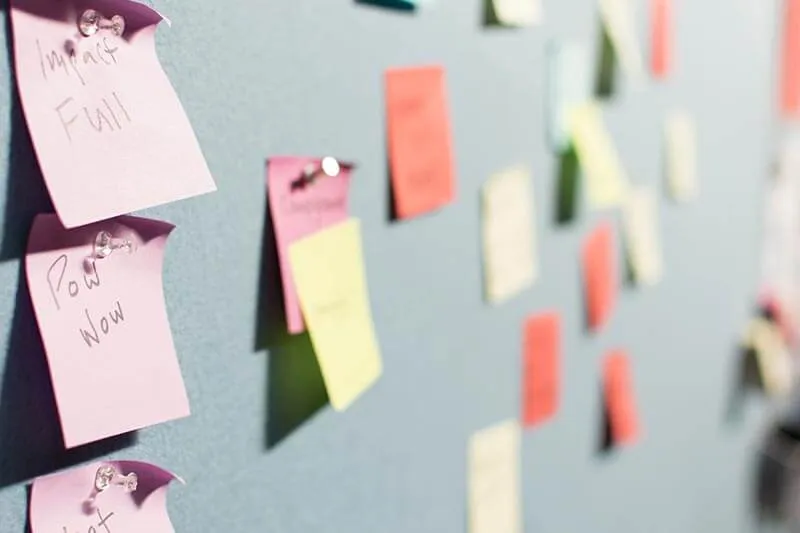Cure The Silo Flu affecting Your Customer Experience

Table of Contents
Help, I’ve Fallen Sick to Silos and Can’t Get Up!

Eliminating silos present in the Customer Experience is a persistent issue companies confront when having independent departments functioning under the same roof. These separate departments have different goals, priorities and even use different tools to accomplish tasks.
This division of responsibilities cloaks the entire organization under a facade of blamelessness. Lots of heavy words to describe such a seemingly simple issue, I know.
But, I describe with such complexity to highlight the difference between simple and easy.
How to solve workplace silos is no new topic; the internet is full of credible research and simple solutions that eliminate the issue. But, there’s a huge difference between the theory of them and the actual practice.
Simple solutions are simple because they make sense, not because they are easy to implement.
Let’s talk about getting in shape, for example.
You should work out frequently and eat nutrient-dense, wholesome food. Makes sense, right? This doesn’t, however, make it easy. The reasoning behind the methodology is extremely straightforward, but actually implementing these tactics requires genuine effort and hard work.

This is exactly why silos still exist in companies and are apparent when analyzing the Customer Experience your company provides. Companies only scrape the surface when trying to eliminate such a disabling mentality, leaving behind traces in every department, including Customer Success.
This is called the Silo Mentality. We’ve all experienced it. It’s that paralyzing “not my job” mindset. The sort of thinking that evolves into a deadly misinformation virus, affecting every department individually until the company as a whole finally falls ill. Now I don’t know about you, but I’d like to save my sick days for true emergencies. Why succumb to workplace silos when a vaccine exists?
How Companies Contract The Silo Flu
In wanting to fully comprehend how the Silo Flu has managed to infect so many organizations, I reached out to an expert in the Customer Experience field: Ricardo Saltz Gulko, CCXP. He is the founder of Eglobalis Information, Insight and Innovation, a group that works with companies of varying sizes to transform themselves around CX, Customer Success, data driven services and professional services.
In working with reputable companies such as Oracle, Ericsson, Amdocs, Inttra, Comverse Technology, Samsung and Redknee, Ricardo has firsthand experience in combating workplace silos. Together, we discussed how companies fall ill and what they can do to cure themselves.
Silos occur because of the way we structure organizations. We systematically separate operational functions into individual departments and then place someone in charge of them.

Executives at every level (managers, heads of, chief executive someone… whoever!) are then tasked with different priorities, responsibilities, and vision.
Sales is focused on closing customers, marketing needs to generate leads, and engineering is dealing with product updates! These separations are clear cut and, as some might even argue, beneficial to the efficiency, accountability, and specialization of a firm.
It’s important not to eliminate department divisions entirely. But what happens when they start to lead to self-centeredness, short-sidedness, and unhealthy competition?
Often times, these silos negatively affect the overall Customer Experience. With so many teams contributing to the overall success of the customer, it’s no wonder why silos form so easily. These barriers undoubtedly hinder any effort at a unified data collection, vision alignment or universal handoff system.
These teams have different responsibilities, but should all act with the same goals in mind. They should work with a functional roadmap that guides their actions and influences the Customer Experience throughout the full lifecycle. This is why it’s so important to ensure each department is working towards the same customer-centric goal.

Curing Workplace Silos Starts With Introspective Management
Dealing with silos in the workplace ultimately comes down to expanding individual perspectives and motivations to cover company-wide efforts. Naturally, this is easier said than done. This sort of expansion requires many steps, and managers should bear the responsibility of accomplishing them.
I know this may sound counterintuitive at first, and you may even find yourself questioning my convictions. Why am I only pinpointing a few people in the company? Who am I to say that you may be contributing to this debilitating sickness? Isn’t this the sort of thinking you could say, I don’t know, causes silos?
These questions are completely justified and I wouldn’t blame you for asking them! But before you lose faith, let’s dissect what I’m truly saying. I’m not blaming managers; this hot-potato blame game is the sort of thing I want every manager to eliminate! On the contrary, I’m empowering them.
These leaders should be leading by example and are therefore responsible for initiating and implementing change within the firm! Of course, in order to fully fight the Silo Flu, every team member will have to play an integral role and should be held responsible for a contributing effort. Ricardo puts it best saying ego is often the pitfall of many great companies. Having experienced this with one of the companies he worked for, Ricardo witnessed huge managerial egos fighting each other in R&D and logistics. This ultimately lead to a huge organizational silo.
It’s become increasingly important for managers to take an introspective analysis of their actions and leadership qualities within the company these days. Often times, managers believe they are delivering a superior Customer Experience when their clients think the exact opposite!
When Bain & Company polled companies on the quality of the Customer Experience they provided, 80% said they were delivering on a superior experience. On the other hand, only 8% of customers said they felt like they were receiving an excellent service.
80% of companies think they provide a superior Customer Experience. Only 8% of customers agree.
This is exactly the type of conflicting views that translate into silos, showing how stark the discordance within a company’s customer journey can be. Unfortunately, these silos are crippling your company’s Customer Success efforts and spoiling the excellent Customer Experience you could be providing!

The Most Common Customer Experience Silos
Every department in a company should work towards the goal of providing an empowering and seamless Customer Experience. It’s no secret that customer expectations are higher than ever these days.
Any slight inconvenience the customer experiences along their journey within your product interface may translate into churn, negative associations, or a conversion to the competitor. If your company’s departments are focused on too many goals, or have conflicting visions, odds are you’ve contracted the Silo Flu in one of these areas:
Organizational Silos
Separate company departments exist for a reason: to excel in specialized tasks and to streamline work. But if there is no communication between the separate departments, these positives morph into negative associations along the customer journey.
This is where the Silo Mentality truly shines. When a customer is constantly transferred to different departments and has to re-explain themselves over and over again, stress and micro-aggression will build up, leading to a less-than-stellar Customer Experience.
Ricardo emphasized the need for a company to choose the channel that best fits their customer’s lifestyle and focus on providing support through this channel. This means communicating to clients through the most comfortable touch point. Having multiple channels reaching out to the customer is often an organizational silo companies can easily avoid by ensuring contact is tailored to fit the customer’s communication preferences.
Data Silos

If your goal is to provide a personalized customer experience, your company needs to consolidate every data set. Every record of the customer’s profile, company, behavior, and transaction history should be accessible through a single channel. A sloppy data collection welcomes unnecessary repetition and uncertainty into the Customer Experience.
Lack of a Unified Vision
When each department contributes to the Customer Experience in their own way, different visions will naturally arise. The product team may want to interact with the customer differently than the marketing team intends to. Sales may wish to capitalize on renewal rate, but customer success is focused on resolution and combating churn.
Whichever method a department chooses, if focusing on achieving a customer-centric goal is not made the primary vision to set sights on, the customer will be left feeling like an afterthought.
Product Silos

One of the main silos occurring within the Customer Experience is the separation, rather removal, of the product team from participating in customer related activities. When the product team is not included in the Customer Experience, product analytics and key behavioral data will be missing.
This is critical to any company that wishes to provide a product that accurately addresses and solves pain-points. When looking at the department network, it should be recognized that product teams have just as much influence in the acquisition of customers as marketing or sales. After all, they’re the ones deciding which product features to release. It makes sense that they should receive insight into what their customers actually value.
7 Actionable Remedies To Cure Customer Experience Silos
1. Organize and Aggregate Data
The best way to minimize hassle and delay during the Customer Experience is to centralize and consolidate data. This means including every department, from the product team to customer success, in the Customer Experience to create a complete customer profile.
Using one CRM system that will credit specific product data to an individual customer is paramount. Only when departments are aligned, will data alignment be possible. Once this happens, customers will feel empowered and less frustrated throughout their journey!
2. Keep Things Simple
The Customer Experience should foster satisfaction and delight within your customer in association with your product. This is why it’s so important for the communication between teams to be as open as possible.
Simplicity is often the goal companies have in mind when integrating new technologies, but often ends up being the one goal they don’t actually accomplish. Communication should be open and different departments should take the time to explain to each other the methods they use, and why.
The key to Customer Success is proactive communication. This means identifying a potential problem and implementing strategies and solutions to ensure the problem doesn’t actually happen. If every department is educated on what to expect as the customer progresses through the product, potential problems can be avoided. Companies that come together to brainstorm solutions can ensure a simple and seamless Customer Experience.
3. Have Customer- Centric Goals
If different departments have different goals, the customer will ultimately suffer. It’s totally OK for the sales team to focus on closing deals and the marketing team to focus on generating leads. But when when these individual goals do not meet somewhere in the middle, a rift isolating the customer from the product occurs. These goals should address customers’ needs to ensure they feel valued at all times.

4. Collaborate Constantly
Cross collaboration is so important within any team that wants to provide a great Customer Experience. As Ricardo communicated to me, people can be doing a great job within their individual departments. However, this amounts to no real value when a disconnect is present between departments.
In order to treat this disabling ego-fueled flu, Ricardo recommends gathering the managers together to set company-wide goals and customer- centric strategies. Equipped with these collaborative efforts, managers can then empower employees to recognize how their efforts directly impact the company’s clientele. The main focus should be: how can we add value to the customer’s life?
5. Minimize Mundane Tasks
This strategy is on par with streamlining data. No customer wants to repeat him or herself to different departments, and aggregating data to eliminate the humdrum can prevent this from happening. As Ricardo told me, “When you think you are doing everything right, you are doing them very wrong”. These are some wise words passed down from his mother, and boy do they resonate here!
Mundane and monotonous activities, such as repeating personal information more than once during hand-off, can be easily solved with automated technology. Eliminate the mind-numbing tasks with tools that gather entire user profiles in a centralized location. With leadership advocating for a consolidated data set, repetitive tasks will get knocked out and the company can get back to providing a real value to the customer.
6. Involve the Product Team
Product teams are often, and wrongfully so, not included in the Customer Experience. As Ricardo reiterated, silos are keeping customers from knocking on your door or returning for continued service.
When examining silos, the customer will have a different perception of them than you do. One way to solve this is to make sure employees express the actual voice of the customer to every department, especially the product team.
If a customer voices a concern, measures should be put in place that allow them to be passed throughout the entire company. The product team is in charge of releasing updates and features to enhance the Customer Experience. How can the product team address specific pain points if they never actually hear them? Sounds like a company welcoming flu season to me!
7. Avoid Surprises
The customer shouldn’t be confronted with any surprises or shock. If this is an issue your company faces, it can be easily solved with an effective and progressive business model.
Ricardo emphasized the importance of a dynamic and flexible firm, having the ability to change as it grows and encounters issues. Every company is unique, and every cure isn’t the same for any company under the weather. But, preventing surprises is surely one starting point for most.
In his experience with large corporations, Ricardo saw how certain departments knew a risk existed but could not communicate the issue to others, such as marketing. This gap in communication translated into a devastating surprise for customers and the company, leaving the company to seek remedies instead of prevention.
Bye-Bye Flu Season!

By now I hope you’re able to anticipate any arising silos that will affect your Customer Experience and the 7 remedies to cure them. Here, I’ve quickly filled your prescription with the key takeaways:
- Managers should set aside their egos and empower employees. Introspection is the first step towards finding a cure.
- The main issues affecting Customer Experience are Organizational, Data, Vision and Product Silos.
- Every department should be involved in the Customer Experience (including the Product Team)!
- Providing value to the customer’s life is why you exist. Company Goals = Customer Goals.
- You can eradicate Customer Experience silos with 7 strategies: Aggregating Data, Simplifying Methods, Customer-Centric Goals, Constantly Collaborating, Minimizing Mundane Tasks, Involving the Product Team, and Preventing Surprises.
With these remedies you’ll surely ward off flu season. And most importantly, your customers will thank you for not taking an unnecessary sick day!
After solving all the problems with CX and silos, you might want to focus on customer success. Read some exclusive tips on customer success delivered by top experts in the sector by checking out the Ultimate Customer Success Playbook. We interviewed some of the most influential authorities in the field to find out what tactics and tricks they use to tackle some of the most common customer success issues.

